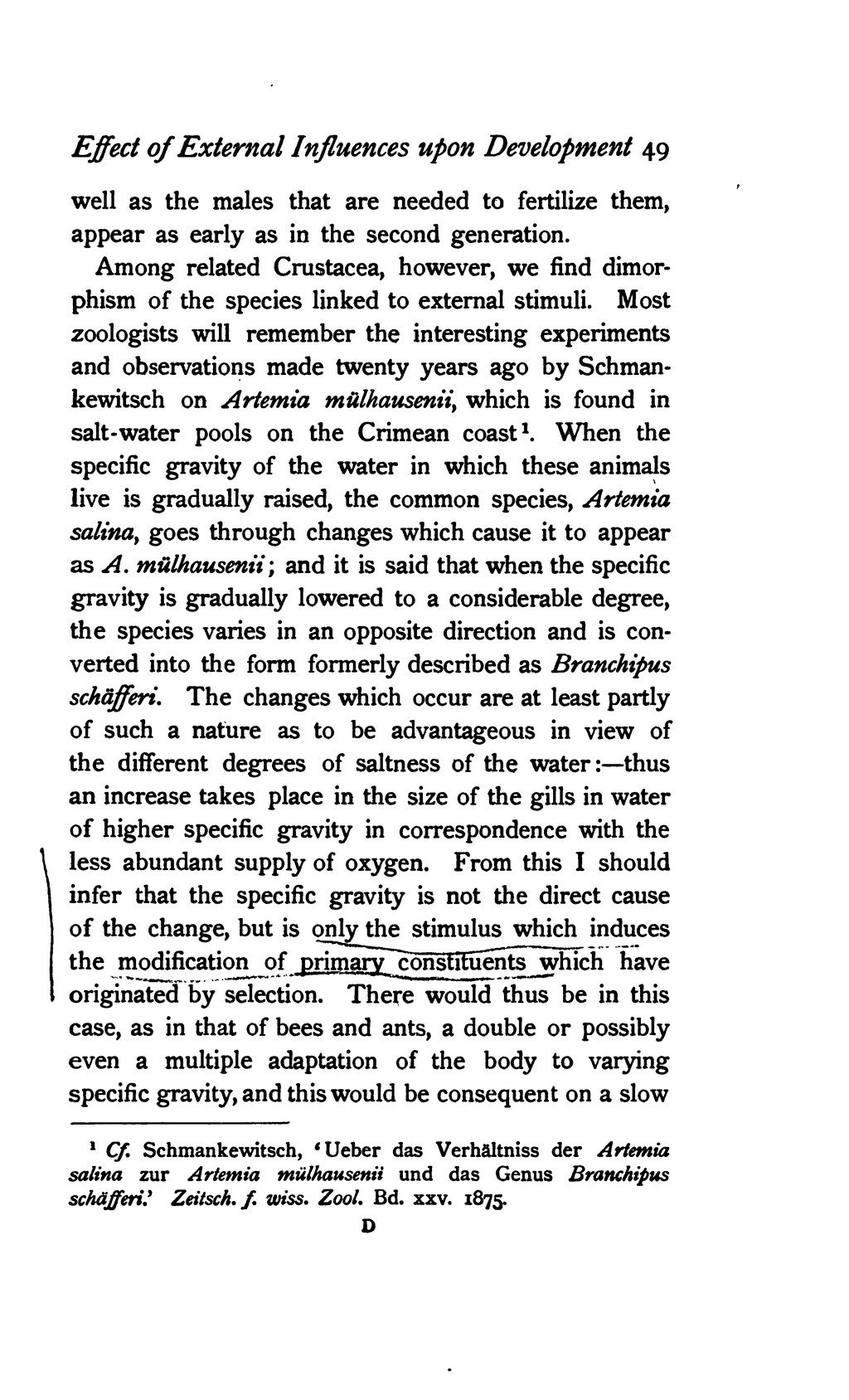well as the males that are needed to fertilize them, appear as early as in the second generation.
Among related Crustacea, however, we find dimorphism of the species linked to exteral stimuli. Most zoologists will remember the interesting experiments and observations made twenty years ago by Schmankewitsch on Atermia mülhausenii, which is found in salt-water pools on the Crimean coast[1]. When the specific gravity of the water in which these animals live is gradually raised, the common species, Artemia salina, goes through changes which cause it to appear as A. mülhausenii; and it is said that when the specific gravity is gradually lowered to a considerable degree, the species varies in an opposite direction and is converted into the form formerly described as Branchipus schäfferi. The changes which occur are at least partly of such a nature as to be advantageous in view of the different degrees of saltness of the water:—thus an increase takes place in the size of the gills in water of higher specific gravity in correspondence with the less abundant supply of oxygen. From this I should infer that the specific gravity is not the direct cause of the change, but is only the stimulus which induces the modification of primary constituents which have originated by selection. There would thus be in this case, as in that of bees and ants, a double or possibly even a multiple adaptation of the body to varying specific gravity, and this would be consequent on a slow
- ↑ Cf. Schmankewitsch, 'Ueber das Verhältniss der Artemia salina zur Artemia mülhausenii und das Genus Branchipus schäfferi.' Zeitsch. f. wiss. Zool. Bd. xxv. 1875.
